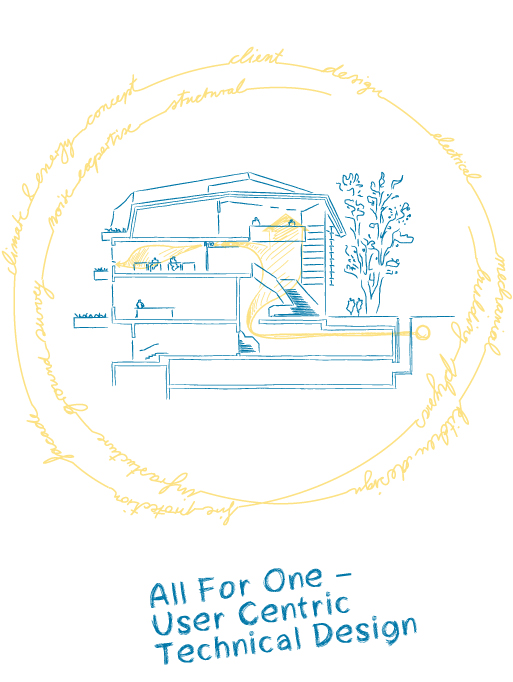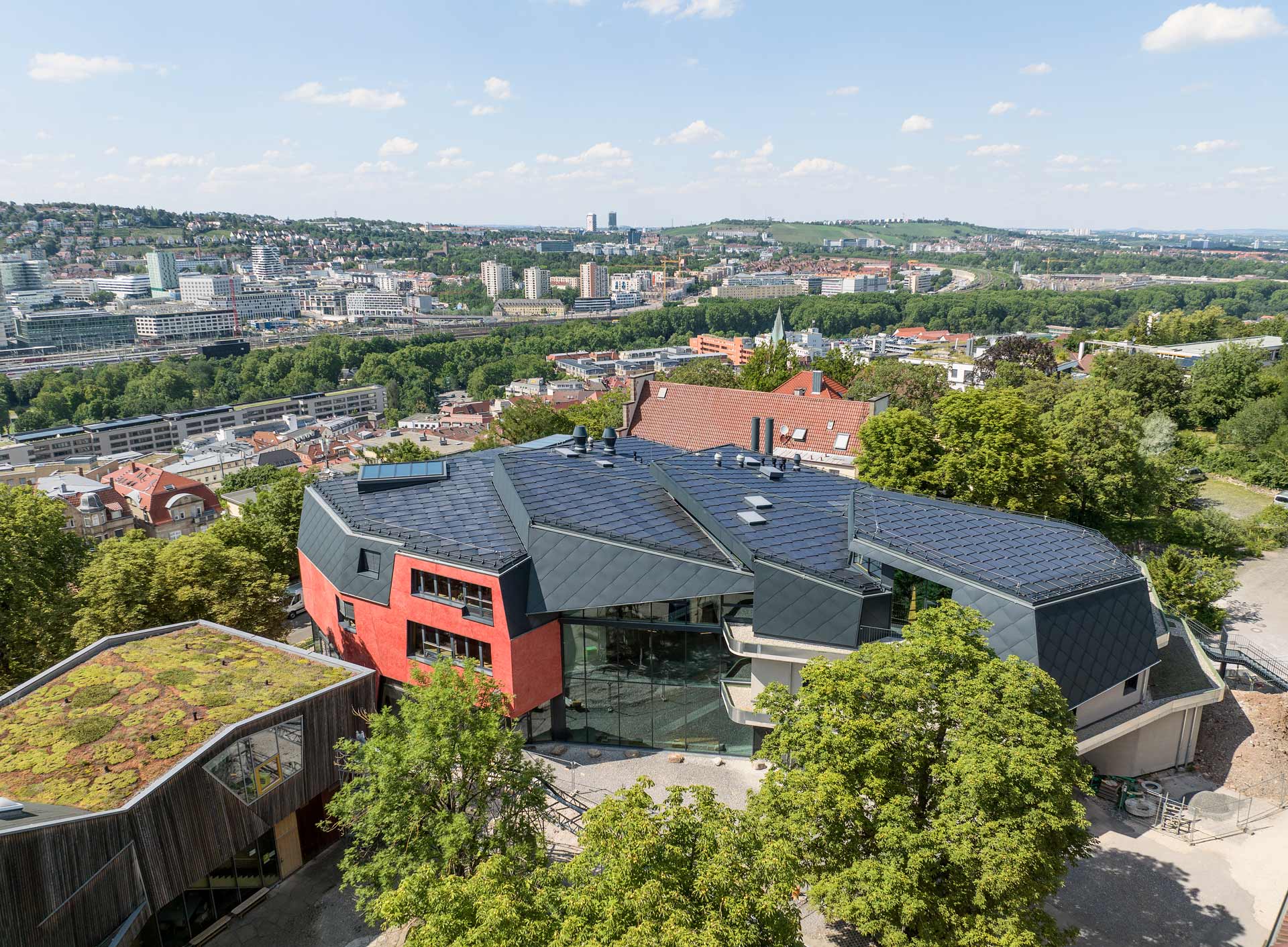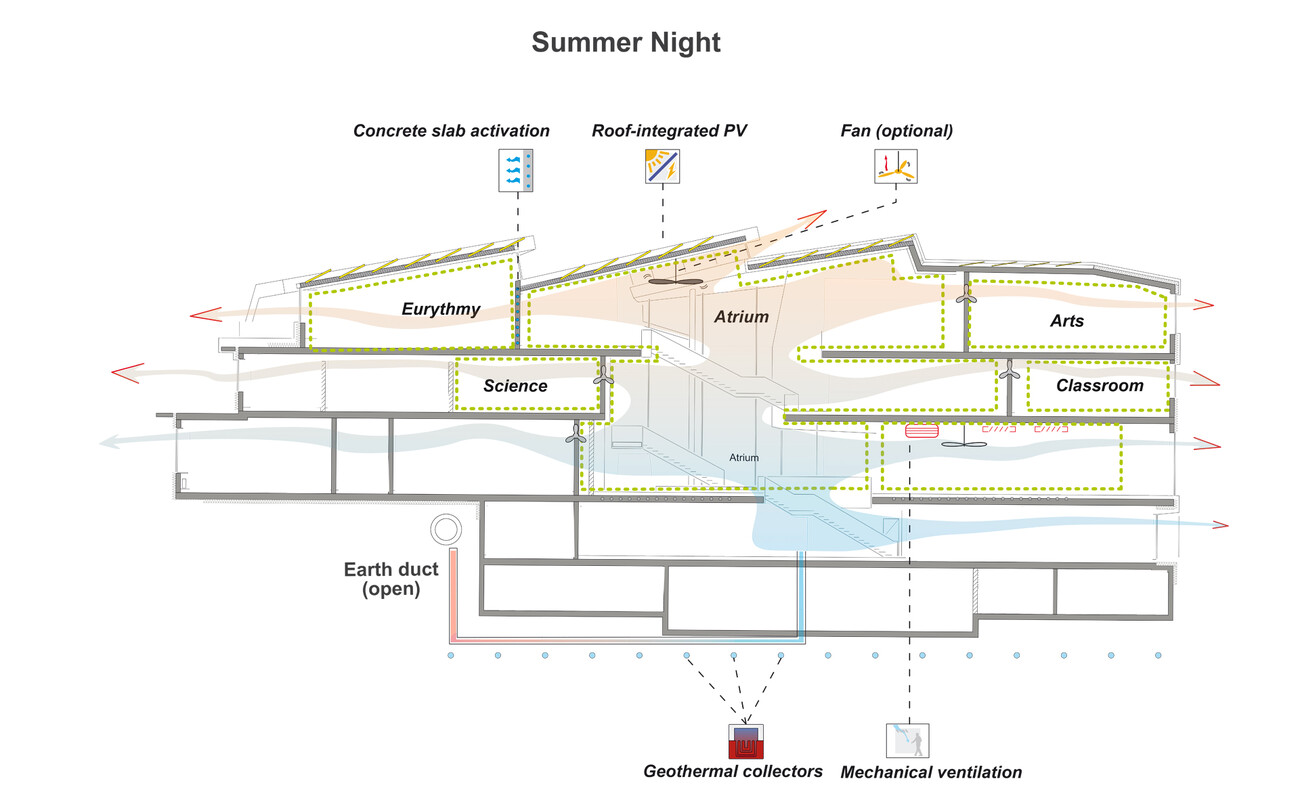Waldorfschule Uhlandshöhe, Stuttgart, Germany


A new school building on the campus of the Waldorf School replaces two former buildings. The space that was previously available was no longer sufficient due to the increased demand for all-day care. The goal of the new building was to be a low-energy building that offers a comfortable environment. The focus was to cover the lowest possible energy requirements to a large extend from renewable energy and also to consider the gray energy of the materials used.
The design of the new building or senior grades was developed in an integral planning process. In this process, architects, building physicists, energy and HVAC planners work together with planners of the other trades (supporting structure, fire protection, ...) and in close coordination with the client and the users to find the best solutions. In this case, the goal was a sustainable building with a comfortable environment and a low demand for fossil energy. The energy efficiency measures are thus an integral part of the architecture, not imposed on an existing design, and structure and building technology are precisely coordinated.
The design supports natural, wind- and thermally-driven ventilation through its form, and the façade design is optimized for use of glare-free daylight, which saves electricity for ventilation and lighting. The daylight situation is optimized in the building areas by the room and window arrangements. During the planning process, Transsolar used accompanying dynamic simulation calculations to quantify the efficiency of various measures and demonstrate user comfort in the classrooms.
Natural ventilation is provided in the common areas, and summer thermal protection is achieved primarily through passive measures. For example, thermal mass that is open to the space, combined with the possibility of night cooling and efficient external solar shading. Further, an earth duct system naturally preconditions supply air that enters the corridors via the atrium. Active overflow elements provide connections to the classrooms. The principle of active overflow is implemented in the building in order to increase the natural potential: This can promote air flows when the best possible air exchange is desired, but it is not mandatory for regular operation. The users decide whether purely natural ventilation is used or if the support of active overflow should be switched on.
In high summer, ceiling fans in the refectory and foyer provide air movement and comfort.
In the eurythmy hall, there is passive cooling system in the partition wall. Geothermal collectors transfer the heat to the ground below the floor slab.
The heat demand of the new building is covered by the school's own combined heat and power plant, as well as a gas boiler (with backup oil vessel) - and a shingle-shaped photovoltaic modules cover the entire roof and help contribute to its low primary energy consumption of 3.5 kWh/m² per year.














